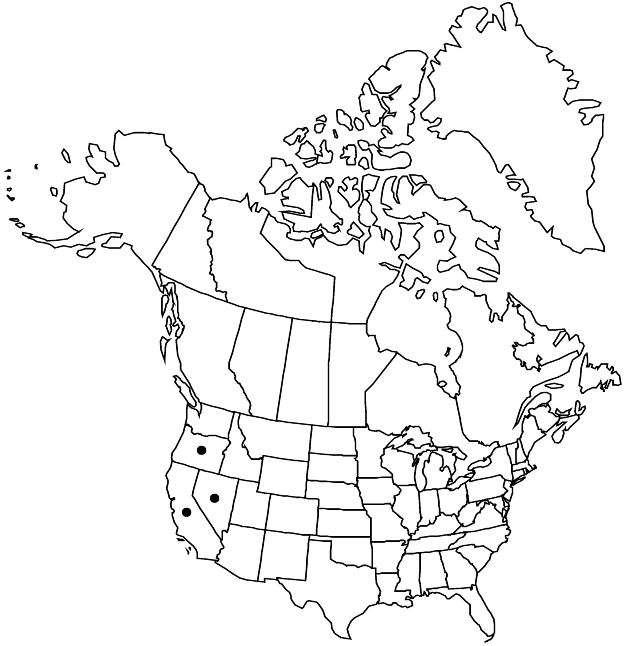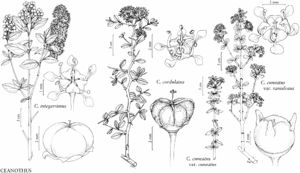Difference between revisions of "Ceanothus cordulatus"
Proc. Calif. Acad. Sci. 2: 124, fig. 39. 1863.
FNA>Volume Importer |
imported>Volume Importer |
||
| (4 intermediate revisions by 2 users not shown) | |||
| Line 10: | Line 10: | ||
|special_status={{Treatment/ID/Special_status | |special_status={{Treatment/ID/Special_status | ||
|code=F | |code=F | ||
| − | |label= | + | |label=Illustrated |
}} | }} | ||
|basionyms= | |basionyms= | ||
| Line 38: | Line 38: | ||
-->{{#Taxon: | -->{{#Taxon: | ||
name=Ceanothus cordulatus | name=Ceanothus cordulatus | ||
| − | |||
|authority=Kellogg | |authority=Kellogg | ||
|rank=species | |rank=species | ||
| Line 52: | Line 51: | ||
|publication title=Proc. Calif. Acad. Sci. | |publication title=Proc. Calif. Acad. Sci. | ||
|publication year=1863 | |publication year=1863 | ||
| − | |special status= | + | |special status=Illustrated |
| − | |source xml=https:// | + | |source xml=https://bitbucket.org/aafc-mbb/fna-data-curation/src/2e0870ddd59836b60bcf96646a41e87ea5a5943a/coarse_grained_fna_xml/V12/V12_781.xml |
|genus=Ceanothus | |genus=Ceanothus | ||
|subgenus=Ceanothus subg. Ceanothus | |subgenus=Ceanothus subg. Ceanothus | ||
Latest revision as of 19:17, 5 November 2020
Shrubs, evergreen, 0.5–1.5 m. Stems ascending to spreading, not rooting at nodes; branchlets yellowish or grayish green, glaucescent, thorn-tipped, round in cross section, rigid, puberulent, glabrescent. Leaves: petiole 2–8 mm; blade flat to cupped, ovate to elliptic, 10–30 × 6–18 mm, base rounded, margins usually entire, sometimes minutely glandular-denticulate distally, glands 18–30, apex obtuse, abaxial surface pale grayish green, sparsely puberulent or glabrous, sometimes villosulous along veins, adaxial surface pale green to grayish green, glaucous, dull, glabrate; 3-veined from base. Inflorescences axillary, umbel-like or racemelike, sometimes densely clustered, 1.2–2(–4) cm. Flowers: sepals, petals, and nectary usually white, rarely pink. Capsules 3.5–5 mm wide, lobed; valves rugose, viscid when young, weakly crested. 2n = 24.
Phenology: Flowering May–Jul.
Habitat: Rocky ridges and slopes, chaparral, conifer and mixed evergreen forests.
Elevation: 400–3400 m.
Distribution

Calif., Nev., Oreg., Mexico (Baja California).
Discussion
Ceanothus cordulatus is one of the most common shrubs in montane chaparral and forests of the Coast Ranges and Cascades of southern Oregon and northern California, southward through the Sierra Nevada, Transverse and Peninsular ranges of California, to the mountains of northern Baja California, and occurs disjunctly in the Charleston Mountains of Nevada.
Putative hybrids between Ceanothus cordulatus and C. velutinus var. velutinus, reported from the Klamath Mountains, the southern Cascade Range, and the Sierra Nevada, have been called C. ×lorenzenii (Jepson) McMinn. A rare intersectional hybrid between C. cordulatus and C. prostratus in the Lake Tahoe basin has been named C. ×serrulatus McMinn. Putative hybrids of C. cordulatus with C. diversifolius and C. integerrimus also have been reported (H. McMinn 1944).
Selected References
None.
